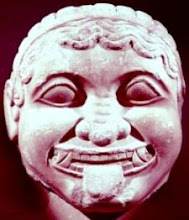A new structure, six ceramic pots with charred seeds, three corn cobs, a pot, abundant obsidian remains and animal bones are the result of the excavations carried out during the last months in Joya de Cerén, within the framework of the project «Construction of Works for Protection and Improvement» of the site, at a cost of $1,340,000, which began at the end of 2018.
 |
| Salvadoran archaeologist work at the Joya de Ceren archaeological site in San Juan Opico, 35 km west of San Salvador, El Salvador [Credit: Oscar Rivera/AFP] |
El Salvador’s only World Heritage Site continues to reveal more details of the domestic life of a pre-Hispanic village that was buried by the ashes of the Loma Caldera volcano in approximately 650 AD.
According to archaeologist Michelle Toledo, who heads the investigations, last December the suspected new structure was confirmed in the southern zone of Complex 1, which has been named Structure 19.
 |
| Vessels with charred seeds were also found in the complex [Credit: Menly Cortez/EDH] |
The building has features similar to those of a storeroom and is located in the area where the footings of the columns that will support the new roof that will protect the area will be placed. In the same area, the vessels with carbonized seeds, the obsidian blade, and a deposit of ceramic and organic waste were discovered, among which are fragments of bones of deer, raccoon and canids, which could be coyote or dog.
«The bones show calcifications that indicate that the animal (canid) suffered from arthritis, so it is certain that it was a domestic animal, because it would not have survived in the wild with this disease,» explained Toledo, who was accompanied by the director of Archaeology of Micultura, Hugo Díaz.
 |
| A clay pot is pictured at the Joya de Ceren archaeological site, in San Juan Opico, 35 km west of San Salvador, El Salvador [Credit: Oscar Rivera/AFP] |
This finding also revealed that the land where Joya de Cerén is located was inhabited for an extended period of time, since the removal of soils for levelling has been identified.
«It has always been thought that Joya de Cerén was situated in the hills, but this is not the case, they levelled the land to build the village and irrigate the crops,» said the archaeologist.
 |
| Selection of artefacts found at the Joya de Ceren, in San Juan Opico, 35 km west of San Salvador, El Salvador [Credit: Oscar Rivera/AFP] |
Beneath the group of structures — that is, where the inhabitants of Joya de Cerén last walked — a previous occupation has been identified, which suggests that the village remained in that place after the eruption of the Caldera de Ilopango, in approximately 535 AD.
Under the Tierra Blanca Joven (TBJ), as the ash expelled by the Ilopango is called, the multidisciplinary team in charge of the excavations found fragments of Usulután type pottery, which corresponds to the late Preclassic period, between 400 BC and 300 AD.
 |
| View of a canine bone at the Joya de Ceren, in San Juan Opico, 35 km west of San Salvador, El Salvador [Credit: Oscar Rivera/AFP] |
Likewise, Toledo mentioned that in Complex 2 a complete reddish pot was discovered, which would correspond to the occupation of the Post-Classic period, from 900 to 1524 AD.
The project that is still being carried out at the archaeological site aims to protect the structures and envisages the construction of three metal roofs for Complexes 1, 2 and 3, stabilization of ash slopes, refurbishment of the museum, updating of the signage and the interpretative trail, which will be in Spanish, French and English.
 |
| View of a pre-hispanic ear piece found at the Joya de Ceren archaeological site in San Juan Opico, 35 kms west of San Salvador, El Salvador [Credit: Oscar Rivera/AFP] |
This project is financed with the support of the French government, through the Comtié Bilateral de Canje de Deuda Franco-Salvadoreño, which granted a contribution of $900,000. The government of El Salvador added another $440,000.
Source: El Salvador News [May 23, 2019]



Комментариев нет:
Отправить комментарий